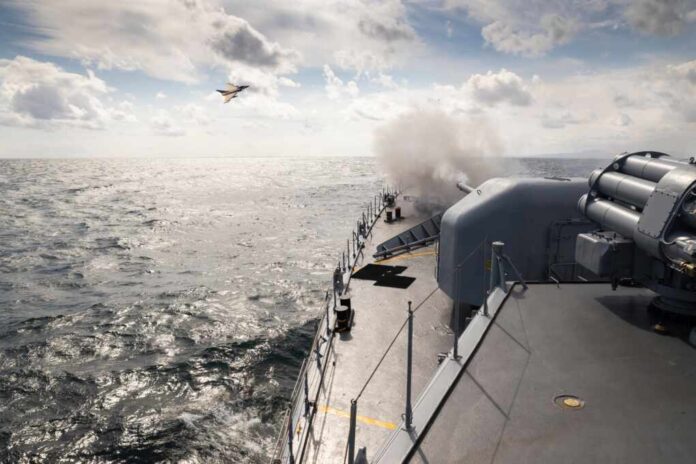
After 136 years lost at sea, the mysterious shipwreck of the SS Nantes has finally been discovered, bringing closure to one of Britain’s most tragic 19th-century maritime disasters.
At a Glance
- The SS Nantes sank in 1888 after colliding with a German vessel, claiming nearly all lives aboard
- Only three people survived the disaster; two jumped to safety while one remained on the doomed ship
- Diver Dominic Robinson discovered the wreck 246 feet below sea level in the English Channel
- A plate bearing the Cunard Steamship Company logo confirmed the ship’s identity after 136 years
- Maritime experts call the discovery “the underwater archaeological equivalent of a needle in a haystack”
A Ship’s Tragic Final Voyage
The SS Nantes, built in Glasgow in 1874 for the prestigious Cunard Steamship Company, met its fate on March 22, 1888, when it collided with the German sailing vessel Theodor Ruger off the coast of Plymouth, England. The impact severely damaged the cargo ship’s hull and lifeboats, leaving the crew with limited options for evacuation. Despite desperate attempts to save the vessel by plugging the gaping hole with mattresses, the Nantes remained afloat for only ten hours before ultimately slipping beneath the waves, carrying most of its crew to their deaths in the cold waters of the English Channel.
“The Nantes was built in 1874, in Glasgow, and very sadly lasted a mere 14 years before it was sunk.”, said Dominic Robinson.
The collision proved catastrophic for almost everyone aboard. Only three individuals survived the sinking – two crew members who managed to jump to safety aboard the Theodor Ruger, and one who remained on the Nantes until rescue arrived. In the aftermath, bodies and wreckage washed ashore at Talland Bay and Looe, Cornwall, providing grim evidence of the disaster but leaving the exact location of the sunken vessel unknown for generations.
The Hunt for a Maritime Mystery
For well over a century, the final resting place of the SS Nantes remained elusive, its location impossible to determine with precision due to the primitive navigation methods of the era. According to maritime historian Dr. Harry Bennett, the challenge of finding the wreck was compounded by the fact that the damaged ship drifted for hours before sinking. Without modern satellite technology, pinpointing its location was virtually impossible for searchers of earlier generations.
“Obviously you’re dealing in a period with no satellite navigation. While the crew tried to save the ship it drifted for several hours, before it finally made its way to the bottom, sadly with many of its crewmen on board.”, said Maritime Historian Dr. Harry Bennett.
The breakthrough came when diver Dominic Robinson and his team utilized information from the UK Hydrographic Office regarding the approximate dimensions and location of an unidentified wreck. Armed with knowledge that the Nantes measured approximately 78-79 meters long and that Cunard-marked crockery had been associated with the vessel, the team embarked on an exploration that would ultimately solve one of Britain’s enduring maritime mysteries.
Confirming a Century-Old Discovery
The definitive moment arrived when Robinson’s team located a plate bearing the unmistakable logo of the Cunard Steamship Company among the wreckage 246 feet below the sea’s surface. This discovery, combined with the vessel’s build, dimensions, technology, and cargo, provided irrefutable evidence that they had indeed found the long-lost SS Nantes. Dr. Bennett, after reviewing the evidence, declared there was “beyond any reasonable shadow of a doubt” that this was the Nantes.
The significance of this discovery extends beyond mere historical curiosity. For Robinson and his team, finding the Nantes represents an opportunity to honor those who perished in the disaster and to ensure their story is not forgotten. Maritime historians praise the find as an extraordinary piece of detective work that provides valuable insights into 19th-century naval engineering and shipping practices. Most importantly, it brings closure to a maritime mystery that has persisted since the Victorian era, finally marking the final chapter in the story of the SS Nantes and its crew.

























